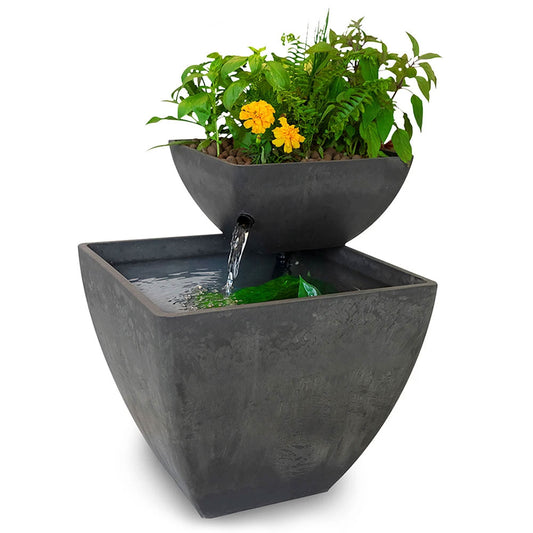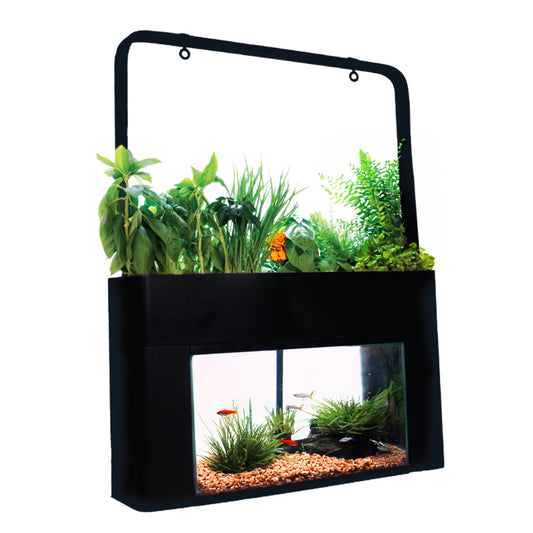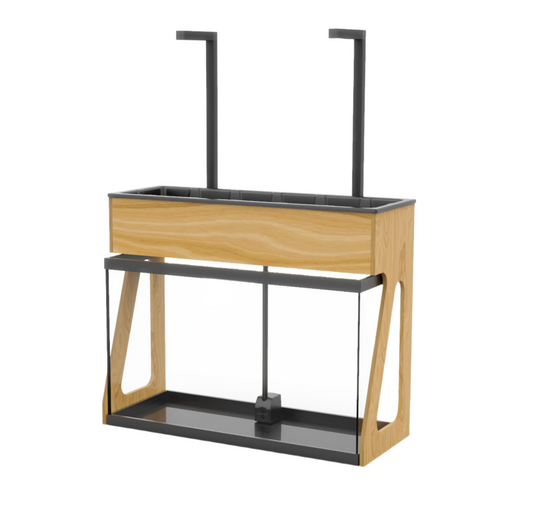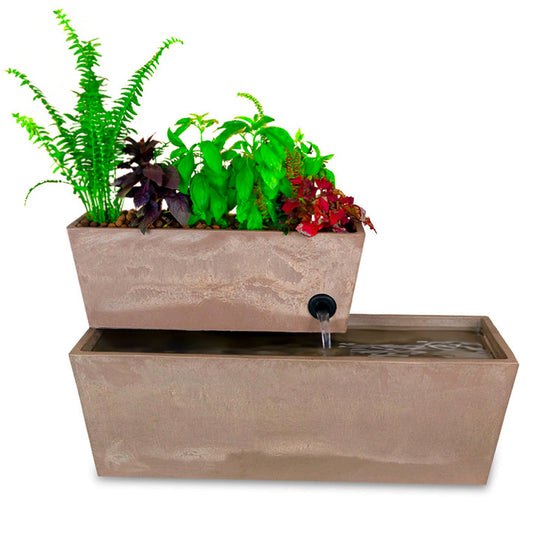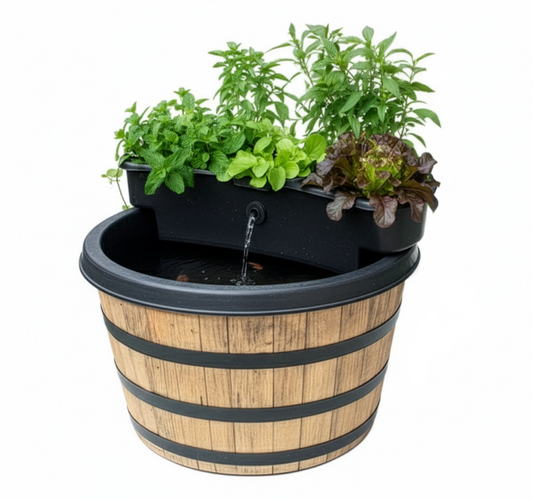POWER GARDENING, Part 2: Light

Power & Light, Part 2: Luminous
Want to grow a meal in your Garden? Craving some vine-ripe tomatoes in January or fresh crisp chile peppers on demand? An indoor vegetable garden takes more work than ornamental houseplants or kitchen herbs, but the rewards of this challenging project include not only garden-fresh produce but the satisfaction of getting the most out of your aquaponic system. In this entry in our Power Gardening series, we continue our exploration of light and lighting from Power & Light, Part 1. When we left off, we’d discussed properties of light, and what makes some light - and some lamps - more useful for plant growth.
What Kind, What Color - And How Much?
Lighting can be expensive, so unless you’ve got a big budget, selecting a light is a matter of figuring out what you can afford that meets your critical needs, and then getting the most from it. The most obvious difference between lights is how powerful they are; the first thing we think to say about light is how bright it is. And as you might expect, this intensity is directly related to plant productivity.
Manufacturers will describe light power in a variety of different ways. The most common is wattage, the actual power draw of the light, which only gives you a very rough idea of how much light is being emitted. Efficiency, the amount of light produced per unit of power used, varies widely between types of lights; new LED fixtures may be many times more efficient than older incandescent or fluorescent lights. This is why LED bulbs are often described in “watt-equivalent” units; many people have a general idea of how much light a 100W incandescent bulb puts out, but a “100W equivalent” LED bulb can typically put out just as much light with only 15W of actual power draw. A 100W incandescent bulb will put out much, much less light than a 100W LED array. The extra energy drawn but not emitted as light is lost as heat; inefficient lights create a lot of waste heat.
Lights may also be described in lumen, the rate of output of visible light, or lux, the output of visible light per area being lit. These provide direct information about light output, but the calculation of lumen and lux are specifically weighted according to how bright light will appear to the human eye. They can be handy for comparing different lights but may not be useful in estimating how much photosynthetically active radiation (PAR) a light actually emits.
In the best case, lights which are specifically for horticulture might give PAR or Photosynthetic Photon Flux (PPF) values. As long as the manufacturer is reporting specs accurately, these provide the most useful information for figuring out how much light will actually reach your plants. Dividing a light’s PPF over the area it’s lighting gives you the Photosynthetic Photon Flux Density (PPFD), the unit measured by specialized PAR readers - a direct measurement of how much photosynthetically useful light is hitting a specific location. Most growers will never need to get into this much depth, but it’s only when we get to this level of specificity that it becomes possible to accurately set and measure lighting levels.
So how much light do you need?
Most garden crops will grow with a PPFD of 100 μmol/s⋅m². This is a relatively low intensity, and even leafy greens will be more productive with more light. Tomatoes and other sun-loving crops can benefit from 2-3 times as much, 250-300 depending on variety. Commercial cannabis growers may go as high as 500 for growth and a blinding 1,000 for flowering! Too little or too much light can both negatively impact growth, so figuring out the right range is important. For many vegetables, the sweet spot seems to be a PPFD of 150-200.
From Ratings to Buying Choices
There’s no one simple rule of thumb for estimating PPFD from wattage or luminosity, even if you’re only considering LED lights. Manufacturers’ wattage ratings vary, as does efficiency, which means that two lights both rated by their manufacturers at 100W may be pulling different actual amounts of power and converting it to different ratios of light and heat. As a starting point, however, you can use some very rough approximations:
Manufacturers often provide less power to LEDs than they are nominally rated for in order to extend their working life. Many LED light fixtures draw only 30-50% as much as they claim.
Efficiency varies widely between manufacturers, but if we assume an average efficiency, then conventional wisdom suggests you’d need about 20W of actual power per square foot of growing plants, which might mean lighting rated at anywhere from 20-50W per square foot. For cheap, no-name LED fixtures, the actual conversion might be as low as 20-25W of actual power per 100W rating. For top-end professional horticulture hardware, 20W of rated light might actually draw 20W and be more than bright enough for a square foot!
A Note On Light Tech
While LEDs have become the dominant lighting technology in many areas, other types are still employed. They may be cheaper to start with, they may just be old, or, like HID (high-intensity discharge) arc lamps, they may still be more cost-effective in certain applications in spite of lower efficiency and shorter life. Commercial growers will choose lights based on the absolute most useful output per dollar, and in some cases that means older, cheaper tech.
While older lighting styles are still capable of excellent performance, especially high-output compact fluorescents and HIDs, we’ve chosen to base our calculations on LEDs and won’t be going into side-by-side comparison of different types of lamps here. In part, this is because that information has already been covered in depth in many other places. Primarily, though, it’s because we believe that at this time LED lights have become the best choice for home growers in virtually all cases, and as the technology continues to improve, this will only become more true. LEDs can offer comparable performance to any other lamp at entry level or top end, and do so with much higher efficiency and longer life, which in turn means less waste.
Next Time on POWER GARDENING
You’ve got your starting point for choosing a light. You know what you want to grow and you know how to figure out your power requirements. Maybe you’ve even run your numbers and gone shopping! Once you’ve got your new grow lights… what, exactly, do you do with them? Check out Part 3 of our lighting coverage next, for the nuts and bolts of lighting placement, accessories, and troubleshooting.

